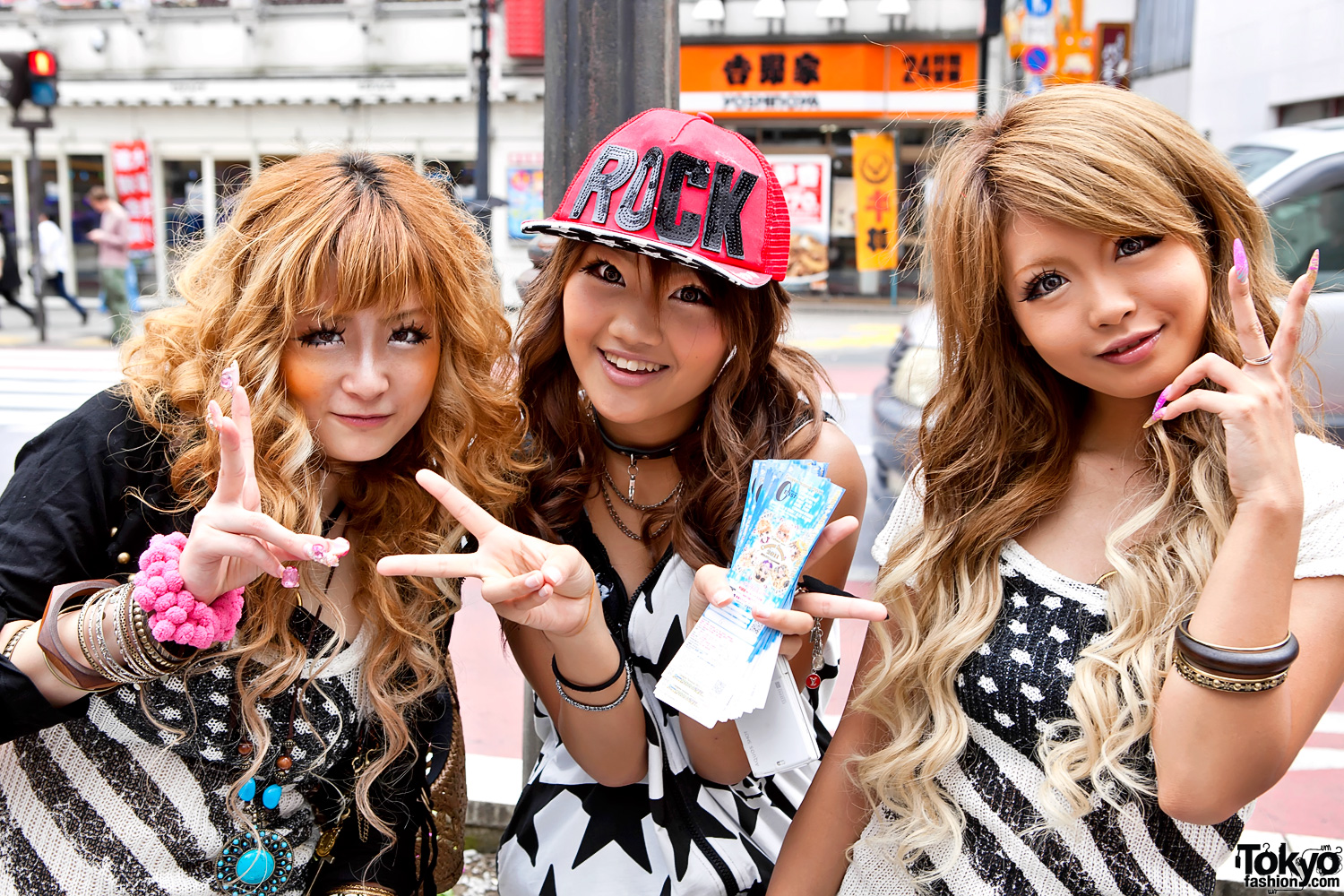Japan is known for its diverse subcultures and fashion trends, which spread quickly over the world. Japan’s traditional Harajuku style is an excellent example. It is a style that is sure to attract one’s eye, with bright colours and theatrical motifs. One of the most recognizable faces of Harajuka’s style scene is the gyaru look. Gyaru, the Japanese transliteration of the word “gal,” first appeared in the Shibuya district of Tokyo in the 1990s. The word was coined to describe Japanese girls who defied the country’s traditional beauty standards. The term Gyaru was most popular in the 2000s, but it has since fallen out of favour. The term is now used amongst older generations who associate it with “childish” girls who are uninterested in working or marrying. Gyaru females were portrayed as flashy, outgoing, and funky individuals, which shook Japanese society. Bleached or coloured hair, adorned nails, and dramatic makeup were all hallmarks of the subculture. Dark eyeliner, artificial eyelashes, and severe contouring were used to make their eyes appear wider. Because of the numerous sub-branches of gyaru, much of gyaru fashion was based on personal preference. The subculture is divided into many subcategories: kogyaru, hime gyaru, ganguro, banba, yanba, agejo, amekaji and many more.
Kogyaru – wealthy schoolgirls who wore their uniform after school hours and hung out in Shibuya – were the initial wave of the gyaru subculture. They wore short skirts with tiny stockings, expensive handbags and accessories, and had slightly tanned skin. All of this was done to defy stereotypes about what a typical high school student should look like. Kogyaru was traditionally known as the girlfriends of chiima males, Japanese students from top private schools. However, as the term chiima fell out of favour, kogyaru began to increase their impact. As the kogyaru grew in popularity, so did older men’s sexualization. The emergence of kogals, who were seen as the prime sexual focus for older males, resulted from this. The term “enjo kosai ” was a stereotype to describe kogals who only wanted to go on paid dates.

The gyaru subculture underwent a fresh transformation to ganguro as a result of the misconceptions and mistreatment directed at kogyaru and kogals. During this time, the subculture changed to a more “affordable” yet still fashionable direction.The ganguros entered the gyaru scene to aid in the fight against sexual objectification and the abandonment of all Japanese beauty standards. Heavy tanning, bright or white facial make-up, and colorfully dyed hair were the dominating styles of Ganguro girls. This sub-genre was also known for their “vulgar” speech style, which was judged improper for young Japanese women. Because of the ongoing stigma and how it attracted older men to the kogyaru, the ganguro was formed as a defense mechanism to keep these men out of their subculture. Alternatively, it concentrated on gaining popularity among the other players.
Despite the fact that the gyaru subculture has existed for a few decades, its popularity has declined significantly in recent years. The closure of gyaru’s primary media publications Egg and Koakuma Ageha is the best sign of its collapse. Moreover, the famous models who were once a part of the magazines that popularized the subculture have either left the magazine or stopped participating in gyaru. Though it appears that the subculture that once ruled Japan’s fashion industry has waned in popularity, it still has admirers around the world.There are many people that continue to support Gyaru throughout numerous social media channels. Furthermore, the gyaru subculture has had a significant impact on Japanese society and will live on in the country’s fashion history for a long time.
Bibliography
Bee, Lizzie. “What is Gyaru? Meaning, Substyles+Resourceses.” Hello Lizzie Bee, https://www.hellolizziebee.com/gyaru-meaning-styles-resources/ Accessed 10 August 2021.
Grinnell College. “About Gyaru Subculture.” Subcultrue and Sociology, https://haenfler.sites.grinnell.edu/subcultures-and-scenes/gyaru/ Accessed 9 August 2021.
Marx, David. “The History of Gyaru- Part One.” neojaponisme, 28 February 2012, http://neojaponisme.com/2012/02/28/the-history-of-the-gyaru-part-one/ Accessed 11 August 2021.
Phro, Preston. “Where have all the ‘gyaru’ gone?” Japan Today, 2 April 2015, https://japantoday.com/category/features/where-have-all-the-gyaru-gone Accessed 12 August 2021.
Cover image: https://tokyofashion.com/shibuya-gyaru-culture-in-decline/



